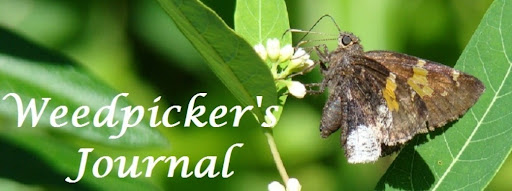Springtime is for salamanders, and the herp people have been a slither with spring sightings. Several good programs produced by the Ohio Vernal Pool Partnership and Ohio Environmental Council were held at Stratford Environmental Center. ...  A Red Eft - the juvenal form of the Red-spotted Newt. Photo by John Howard
A Red Eft - the juvenal form of the Red-spotted Newt. Photo by John Howard Red-spotted Newts have a perplexing life cycle. Eggs are laid in the water, and 3-4 months after hatching, the juvenile crawl onto shore to begin a terrestrial phase of life as a brightly colored Red-Eft. Their bold coloration is a warning: TOXIC personality! Since they are poisonous, they fear no predators and can occasionally be found on rainy days as they boldly cross woodland trails.

After 3-7 years they return to the water, changing to a mature coloration of olive green and - you guessed it- red spots! Their tail flattens and becomes keeled for this aquatic stage of life. Although their appearance changes, they keep their toxicity into adulthood.

Ah, a handsome fellow! But how do we know it is a fellow?

The males acquire this dark patches of rough skin on their hind legs and toes during mating season.

These "nuptial pads" are best compared to those sticky black mats you may use on your dash board to keep sunglasses and cellphones within reach.

"
Nuptial pads" photo by John Howard With true Salamanders, the mating season involves much snout rubbing and tail waving... and let's just say, these pads come in useful. They disappear after the mating season.
 Red-spotted Newt all photos by John Howard
Red-spotted Newt all photos by John Howard
The life-cycle of the RSN is a bit more complicated than other salamanders, and are certainly the most toxic. If you do have an opportunity to handle one of these beasts- be sure to wash your hands well afterward.
And don't lick the Newt.
...
A very special thanks to Mr. John Howard for his amazing photos. He and Janet Creamer will be leading Quest 7, "Streamside" for Flora-Quest. Call me if you want in (419-683-8952), there are only 2 places left!
 Silvery Blue- LUCK shot by Greg Miller
Silvery Blue- LUCK shot by Greg Miller
























 in your landscape?
in your landscape? 











 Hepatica,
Hepatica, 





